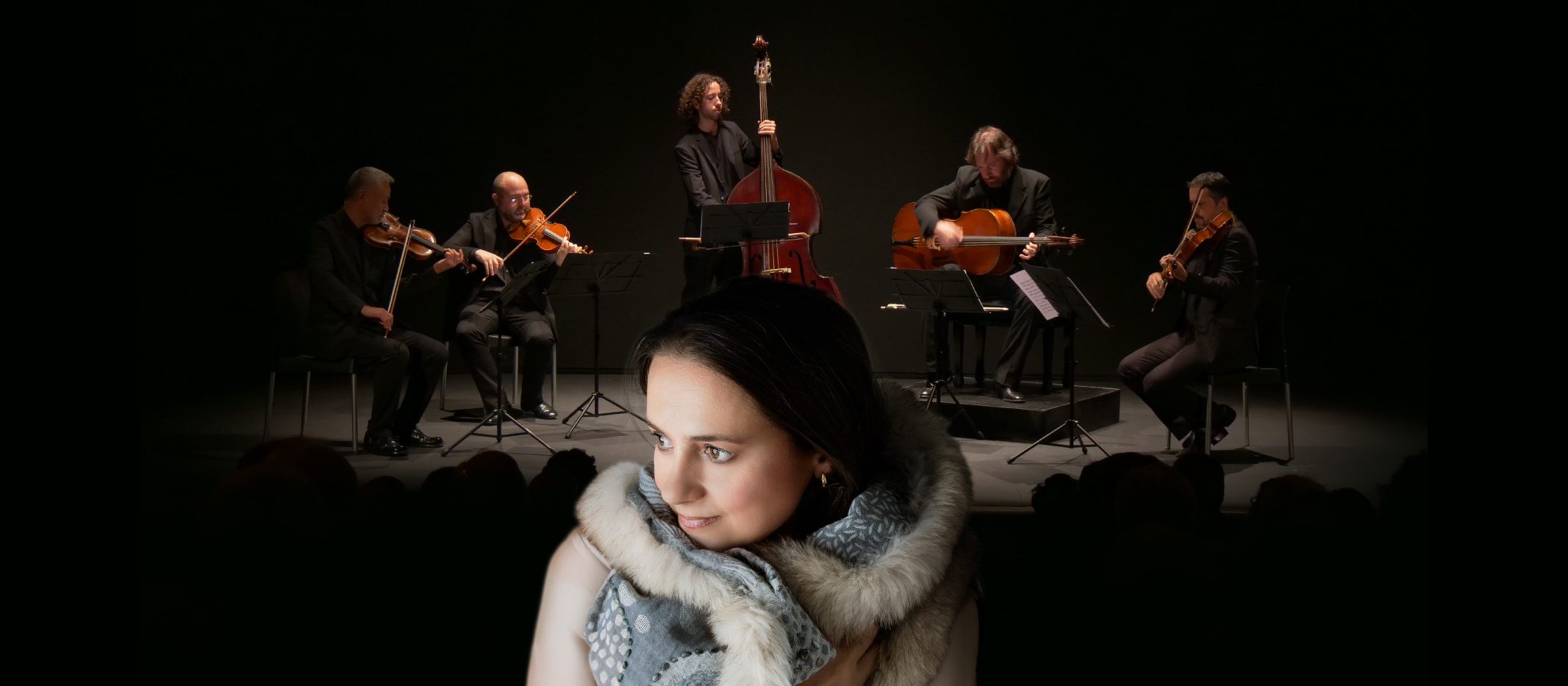Boccherini’s Stabat Mater
Synopsis
As part of Auditorio de Tenerife’s Chamber Music Cycle, soprano Nuria Rial and the ensemble La Ritirata will perform Boccherini’s Stabat Mater.
Amid the peace and quiet of court life at the La Mosquera Palace in the remote village of Arenas de San Pedro, far from the Court of Madrid and the musical capitals of Europe, Italian composer Luigi Boccherini lived and served Infante Luis of Spain for nine years, during which time he composed the greatest number of his masterpieces. In this location, in 1781, under the majestic peaks of the Sierra de Gredos, one of the greatest works of 18th-century sacred vocal music was performed for the first time: the impressive Stabat Mater written for soprano and string quintet with double bass and interpreted in the isolation and intimacy of the palace. It is thought that the soloist was Clementina Pelliccia, singer and wife of the composer, and that she was probably accompanied by Boccherini himself on the cello, Francisco Font on viola and one of his children or perhaps another court musician on violin.
This original composition for soprano and string quintet, catalogued G. 532, Op. 61, which featured in this programme, is the first version of the piece. The only extant handwritten score of this work was owned by Louis Picquot and has been in the Library of Congress in Washington since 1922. It contains 11 of the 20 verses of the original sequence of the 13th-century Christian hymn, although it appears that it was not used for mass but for concert performance of sacred music. The composer revised it in 1801 for three voices (soprano, contralto or a second soprano, and tenor) and used as an added overture the Allegro assai of his symphony in F Major, Op. 35, no. 4, G. 512 (1782).
The magnificent contribution of Luigi Boccherini stands out among over 200 musical versions of Stabat Mater, all of which are based on a 13th-century text that has been attributed to Franciscan friar Jacopone da Todi, who meditates on the suffering of Mary during the crucifixion of Jesus. It seems likely that Boccherini’s decision to compose this piece was influenced by Pergolesi’s Stabat Mater, which was one of the most widely published scores of the 18th century. Like Pergolesi, Boccherini composed his version in F minor, which imbues it with a particularly expressive and lyrical undercurrent that greatly enhances the cello’s solo passages.
Artistic Datasheet
Nuria Rial, soprano
La Ritirata
Hiro Kurosaki, violín
Miriam Hontana, violín
David Glidden, viola
Ismael Campanero, violone
Josetxu Obregón, chelo y dirección artística
Programme
Luigi Boccherini (1743 -1805)
String Quintet in B-flat major, Op.39/1, G. 337 (1787)
Andante lento
Allegro vivo – Tempo di minueto – Grave – Allegro vivo
Rondeau. Allegro non tanto – Minuetto – Rondeau
Stabat Mater, Op. 61, G. 532 (1781 Version)
I. Stabat Mater dolorosa. Grave assai
II. Cujus animam gementem. Allegro
III. Quae moerebat et dolebat. Allegretto con moto
IV. Qui est homo qui non fleret. Adagio assai (Recitativo)
V. Pro peccatis suae gentis. Allegretto
VI. Eja mater, fons amoris. Larghetto non tanto
VII. Tui nati vulnerati. Allegro vivo
VIII. Virgo virginum praeclara. Andantino
IX. Fac ut portem Christi mortem. Larghetto
X. Fac me plagis vulnerari. Allegro commodo
XI. Quando corpus morietur. Andante lento
Multimedia
Tickets
Access to the hall is not permitted once the doors are closed for the event's start.
Access is only allowed to those over five years of age.
For further information, please check the general purchase terms and hall conditions.
If you have any questions while purchasing your tickets, please write to taquilla@auditoriodetenerife.com or call 922 568 625 from Monday to Friday from 10 a.m. to 2 p.m., except for public holidays.
19:30
